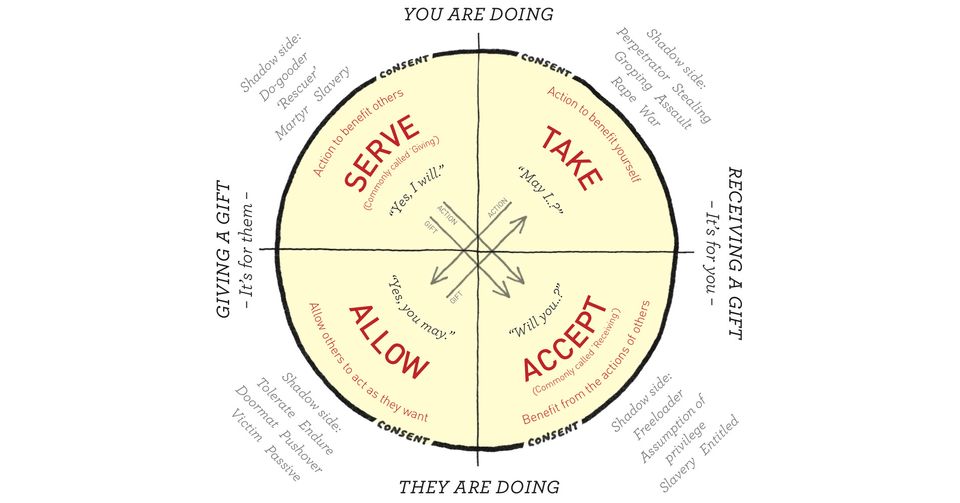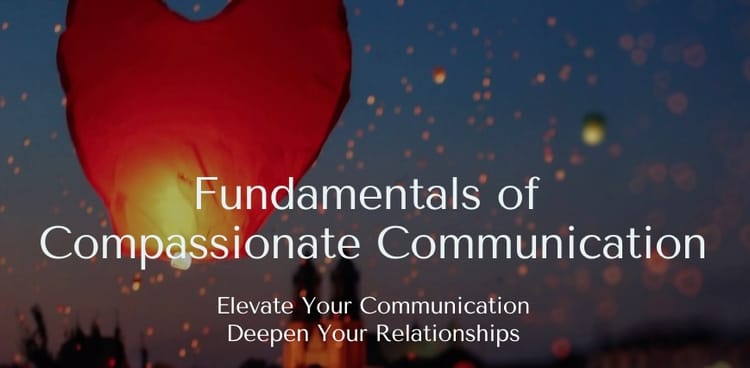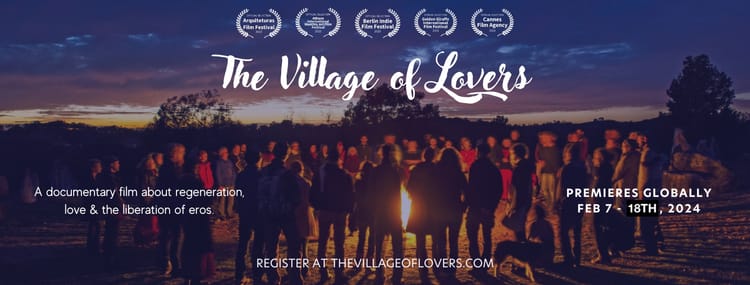The Wheel of Consent

I enjoy finding keys to understanding. When I find something that so concisely and clearly delivers useful knowledge, I take note. It is in that spirit that I offer you Dr. Betty Martin’s “Wheel of Consent.”
The Wheel of Consent is a model for understanding and exploring the dynamics of giving and receiving. The currency of this exchange is action. What do we do, and for whose benefit?
Here is a larger image of the diagram to print out.
And here is a page with more in-depth information.
I've found it an amazing tool for practicing and developing intimacy. Making offerings to, or requests of, partners based on the dynamics of the Wheel can be a pleasurable and enriching experience.
Do we do something for the benefit of others? Do we do something for the benefit of ourselves? Do we ask another to do something for our benefit? Do we give ourselves to others and allow them to act as they desire?
If both parties are in consent, hooray! If one party is not in consent, one may be allowing themselves to be dominated or may be abandoning their needs or desires.
In working with the Wheel of Consent with a partner, a couple of things surprised me. For one, the idea that taking can be perfectly fine, even welcomed, if one asks. In an intimate exchange a partner may welcome the request, “May I do as I like with you?” and view the granting of it as the giving of a gift. Of course, to do as one likes, without consent, puts one in the shadow realm.
Another thing that wasn’t immediately obvious to me was the idea that giving without consent may be viewed as being in shadow. We might say, “I’m doing something good for this person. There’s no need to ask.” The danger is that the other person may not have the same opinion of what is “good” for them. And, even if they agree, they may not be ready to receive at that moment. In more extreme cases one could view being in service to others without their consent as a form of dominance.
Working with the Wheel can also help track how the same action may be in light or shadow, or move from one to the other, depending on our desire or willingness to grant, and/or maintain, consent. We may, for example, start in the “Allowing” part of the Wheel and then, as our consent shifts, move into tolerating and enduring, if we fail to communicate that our consent has changed.
A fun and thrilling way to explore the Wheel of Consent is to play the “Three-Minute Game” with a partner. The way I’ve played it, one partner asks two questions of the other: “What would you like me to do for you for your pleasure?” and “What would you like to do to me for your pleasure?” Then the actions in response to each question are done for 3 minutes. Then the other partner asks the questions.
What I find so interesting about this is that it separates giving from receiving thus enabling us to focus on one or the other. It also, I find, really puts us in the mind frame of “What do I want?” and “What do I consent to?”
The answers to the questions come in the form of requests. The responses to the requests fall somewhere on the spectrum from yes to no. That, of course, is offering consent, or not. Your answer might be a strong yes, a yes I’m willing, or somewhere in between yes and no. In that case you might have curiosity as to whether your partner is willing to negotiate the request with you so that you can get to a yes. The answer could also be no, which might range from “No, not right now,” to “No, I’m strongly against that.”
In my experience, this focus on being asked what one desires gives rise to new ideas and lovely experiences.
I wish you well on your exploration of desire and consent! And I welcome your comments on your experience, if you’re willing to share them.
This post is public. Feel free to share!






Member discussion